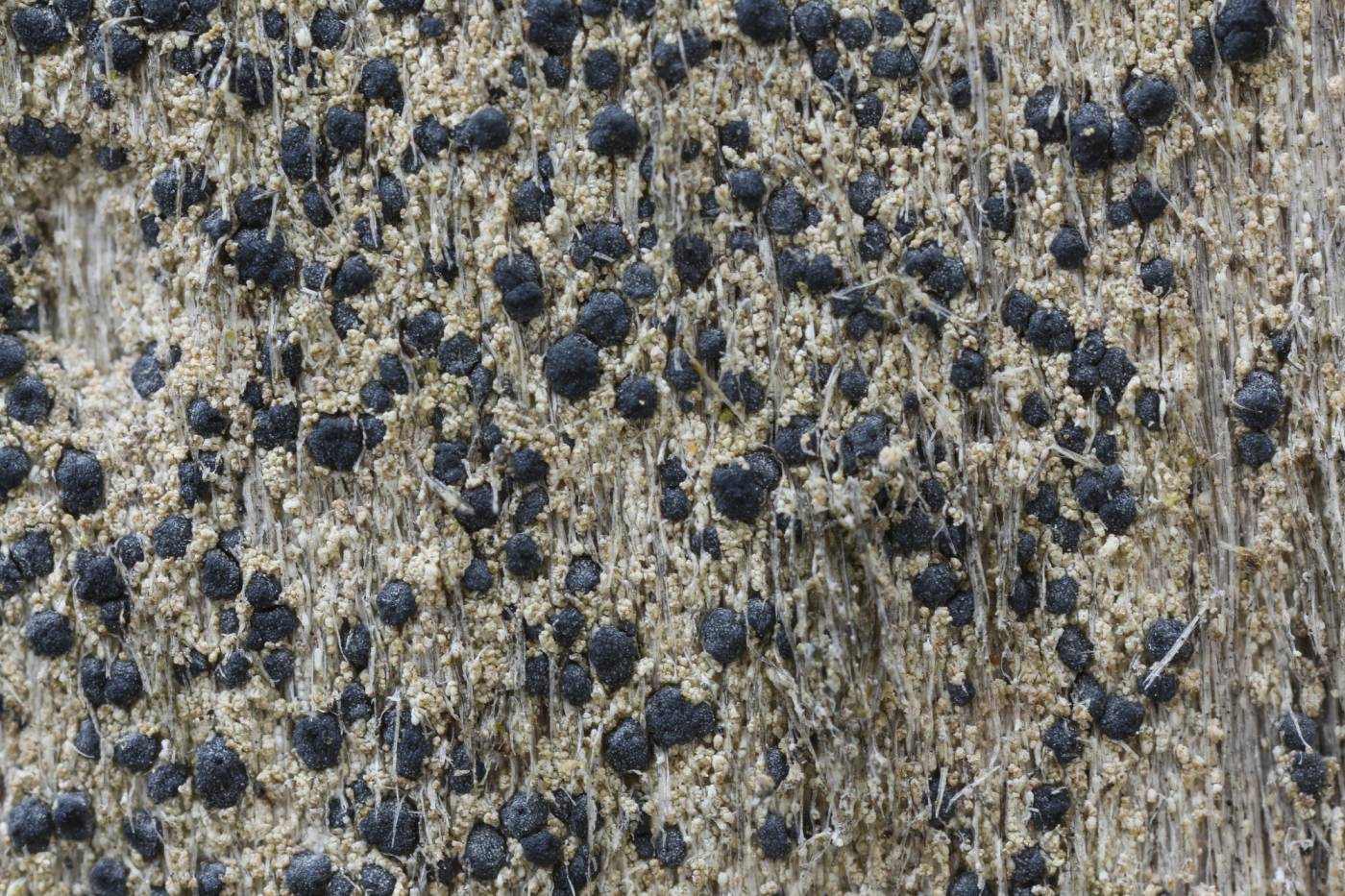A boreal epiphytic or epixylic lichen with a greyish-white sorediate thallus, which may also have a pinkish, yellowish or brownish tinge depending on its exposition and age. Particularly conspicuous are the irregularly spaced, dark, often bluish-pruinose, convex apothecia nearly identical to those of the related esorediate L. turgidula. Specimens with an immersed thallus without soredia are also known to occur in Norway, these are then confusable with the latter taxon. The two species are reliably identifiable chemically: the diagnostic compound of L. leprarioides is pseudoplacodiolic acid, whereas that of L. turgidula is placodiolic acid (Tønsberg 1992). L. leprarioides is usually well recognisable in the field due to the pruinose fruiting bodies on the pale sorediate thallus. However, in mosaics of other crustose lichens, it can easily escape attention, especially if it is sterile.
In the Czech Republic, most records are concentrated in the Šumava Mts, but the species occurs in most of the higher border ranges, and also in the Brdy uplands. It usually grows on wood of snags and bark of conifers in boreal forests, such as waterlogged and climax spruce forests, mire forests and raised bogs. Seldomly, it can also be found in wet beech forests.
Literature: Tønsberg T. (1992): The sorediate and isidiate, corticolous, crustose lichens in Norway. – Sommerfeltia 14: 1–331.
taxonomic classification:Ascomycota → Lecanoromycetes → Lecanorales → Lecideaceae → Lecidea
Red List (Liška & Palice 2010):VU – vulnerable
Occurrence in the Czech Republic
All records: 99, confirmed 82. One click on a selected square displays particular record(s), including their source(s).
